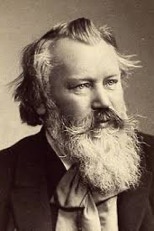
Johannes Brahms
(1833-1897)
Double Concerto for Violin and Cello, op. 102
(1887)
PROGRAM NOTES
By Leo Eylar
It is an absolute pleasure to be offering a performance of this incredible composition with the California Youth Symphony and our superb soloists Valery and Starla Breshears. It is a work of profound depth, beauty, and power, and one which I have held dear to me since I first heard it as a teenager in Los Angeles.
Double concertos, primarily those for solo violin and violoncello with orchestra, are actually more common than one might imagine—there being more than four dozen by recognized composers over the centuries. Contemporary composers have also tackled the double concerto, including Roger Sessions, André Previn, and others. Nevertheless, one stands almost alone in its towering reputation and frequency of performance, and that is Brahms’s work. Although composed in 1887, ten years before his death, it is the composer’s last work for orchestra. It is dedicated to his life-long friend and musical collaborator, the violin virtuoso, Joseph Joachim, one of the most celebrated violinists of the century. Joachim’s wife Amalie was also a close friend of the composer and a fine opera singer. Unfortunately, Joachim and Brahms had a falling out. Joachim thought that his wife was cheating on him, and of course he could count on his buddy Brahms to back him up, right? Wrong! Brahms was certain that Joachim was just being paranoid, so he wrote a letter to Mrs. Joachim (aka Amalie Weiss) saying so. She then used this letter against Joachim in their divorce proceedings. Oops. It was years before Joachim spoke to Brahms again. Finally, reconciliation came in the form of the Double Concerto, which Brahms had composed as a kind of peace offering to Joachim. The cellist for the première was also a longtime friend and collaborator with Brahms, Robert Hausmann.
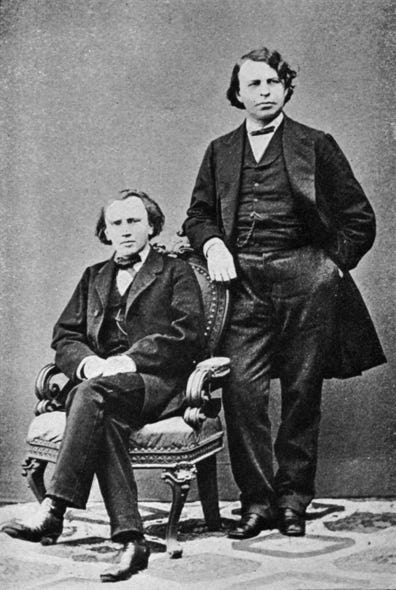
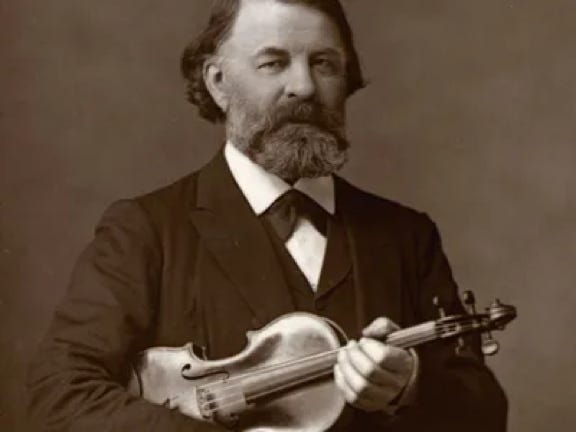
Joseph Joachim

Joachim and his wife Amalie
Brahms and Joachim in 1855
Lorem
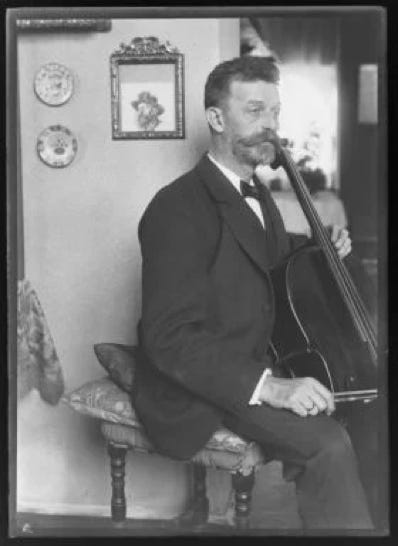
In a letter to Clara Schumann written by Brahms outlining his summer composing plan for 1887, he stated “As to myself, I can tell you something funny, for I have had the amusing idea of writing a concerto for violin and cello. If it is at all successful it might give us some fun. You can well imagine the sort of pranks one can play in such a case. . .”
There is a great uneasiness in those flippant words, as Brahms rarely used words like “fun” and “pranks”. It is astounding that Brahms, at that age (54) and experience and position, was still insecure about solo writing. The main problem was that he did not have Joachim on hand to help him, due to their estrangement. As he confessed to Clara in the same letter, “It’s a different matter writing for instruments you only know at second hand—which you can only hear with your mind’s ear, so to speak—and writing for an instrument you don’t know through and through, as I know the piano, where I know precisely what I’m writing and why I’m writing it in that particular way.” A revealing admission from a composer at the height of his powers!
The work was first performed in Cologne in October of 1887, with Brahms at the podium. The Concerto received a mixed reception from the critics. Many considered it a somewhat austere—even overly modern composition--and not a particularly brilliant showpiece for the soloists. Clara Schumann wrote in her journal: “I do not believe the Concerto has any future…nowhere has it the warmth and freshness which are so often to be found in his works.” Theodore Billroth, one of Brahms’s closest friends (and one of the most acclaimed surgeons in the world, among the first to explore procedures made possible by the discoveries of anesthesia and antisepsis) wrote to critic Eduard Hanslick that he found the work “tedious and wearisome, a real senile production. If the Gypsy Songs (a high-spirited product of the previous summer) had not been composed later, one might almost believe it was all up with our Johannes.” The public, for its part, would never embrace the Double Concerto during Brahms’s lifetime. Even today many newcomers to the work still encounter it as a somewhat intellectual exercise in compositional virtuosity. Those observations have adherents, but veteran Brahms listeners adore the work. It certainly does not fit the stereotype of the typical romantic concerto, one that emphasizes showy pyrotechnics and warm, lyrical melodies. It does, nevertheless, require two virtuosos in the solo parts, performers who are skilled at close musical communication and mutual expressivity.
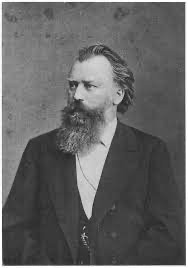
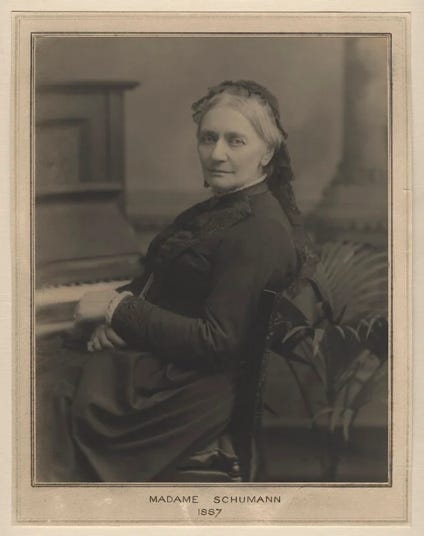
Robert Hausmann
Brahms in 1887
Clara Schumann in 1887
The concerto follows the established pattern of the time. It begins with a fast and dramatic movement, in which the soloists have virtuosic episodes contrasted with the full orchestra. The harmonic language is typical of Brahms, being based on triadic movements, and the orchestration belongs to the late romantic tradition. By contrast the second movement is slow, reflective and lyrical. The concerto concludes with a lively finale with plenty of virtuosic writing for the soloists. Here we can trace the influence of Hungarian gypsy idioms. Brahms had, in his early career, been introduced to gypsy music in his role as an accompanist, and it remained an influence throughout his life. An interesting detail in this work is Brahms’s use of a musical cipher with the notes F-A-E, which stand for his motto “Frei aber einsam” (“free but lonely”). In the Double Concerto the composer slightly rearranged the notes to provide the motif, A-E-F, which one will hear transformed and integrated thoroughly throughout the first movement. Listen constantly for the intervals of a fourth and a step. They’re everywhere, frontwards, backwards, and upside down, turned in and out. You can’t miss it. The process is a tour de force of compositional integrity and unity—a milestone on the path from Beethoven to Schoenberg in the eyes of many.